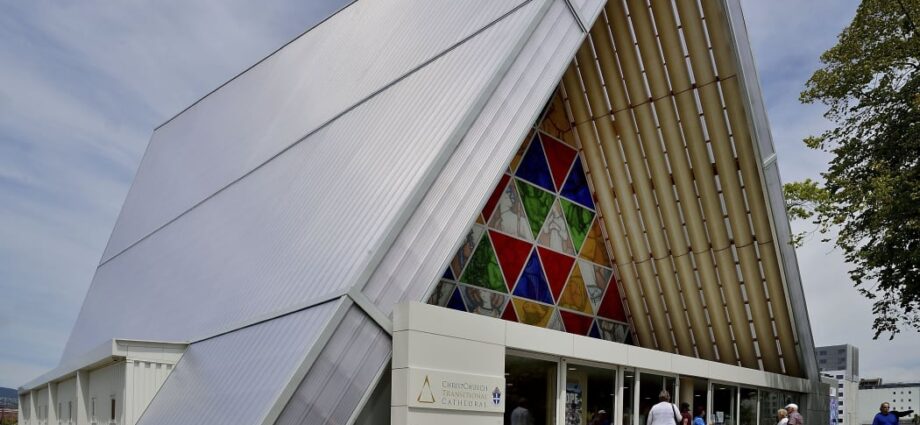PHOTO: The Cardboard Cathedral. Photo: AFP
A sense of sadness envelops the former spokesperson for the Cardboard Cathedral in Christchurch as he contemplates the possibility of the building being put up for sale. The Anglican Diocese of Christchurch convened a meeting on Friday and Saturday to explore future options for this iconic site.
Officially named the Transitional Cathedral, it emerged in 2013 in the heart of the city following the devastating 22 February earthquake, which caused extensive damage to the 150-year-old Christchurch Cathedral. Reverend Craig Dixon, the former leader of the Cardboard Cathedral project, expressed his concerns to the Midday Report, suggesting that Anglican leaders seemed to be seeking a quick financial solution.
He remarked, “It appears to be a hasty attempt to generate funds for the cathedral in the square. I find this response regrettable. The Cardboard Cathedral holds immense significance for Christchurch and New Zealand. It stands as the first public structure erected in the post-earthquake era.” Initially conceived as a temporary place of worship, the Cardboard Cathedral quickly garnered popularity among tourists.
Designed by the renowned Japanese architect Shigeru Ban, the Cardboard Cathedral achieved recognition by winning the prestigious Pritzker Architecture Prize in 2014. Dixon emphasized that such a building of distinction would be irreplaceable in the country. He urged careful consideration of its fate instead of a hasty sale to cover budget overruns on the cathedral in the square.
In the past year, a fundraising campaign was launched to bridge a $50 million funding gap for the restoration of the ChristChurch Cathedral, which is estimated to cost around $160 million. Reports from The Press indicated that discussions within the Anglican Church’s governing body, the synod, included the potential sale of the Cardboard Cathedral building, valued at $11.6 million, although this matter was not scheduled for discussion until Saturday, as relayed by an executive assistant to Bishop Peter Carrell.
Dixon voiced concerns about the possibility of selling the Cardboard Cathedral to an entity with less regard for its cultural significance. He mentioned the risk of it being repurposed into a pub or other unrelated use, potentially undermining its status as a memorial for those who perished at the adjacent CTV site, a place of international remembrance.
Dixon firmly rejected the notion of dismantling the building, labeling it as “absolutely crazy.” He envisioned a multitude of valuable applications for the structure beyond its current use.
Mark O’Loughlin, a Christchurch Harcourts real estate agent who engaged in fundraising efforts at the cathedral, highlighted the property’s prime location. He considered it a “beautiful corner site” and one of many highly desirable pieces of real estate initially acquired by the Anglican Church during the early days of church construction in New Zealand. O’Loughlin estimated the land to be approximately 4000 square meters, or around four acres, with a potential value ranging from $1500 to possibly $1800 per square meter, or even more.
While acknowledging the Cardboard Cathedral’s architectural excellence, O’Loughlin pointed out the commercial opportunities it presented. He suggested that its ideal northwest-facing position adjacent to the new stadium being built in the area made it a compelling prospect for a mixed-use commercial and residential development or a hospitality establishment.
However, O’Loughlin also acknowledged the likelihood of the building itself being disassembled. He indicated that parts of the cathedral could be sold to generate funds, emphasizing that the land alone was worth approximately $7 million and held an overall valuation of about $12 million when considering improvements.
The ChristChurch Cathedral’s ongoing reconstruction project is in its second phase, involving the strengthening and restoration of the cathedral’s main structure and tower. The final phase, encompassing the construction of a new cathedral center and visitor center, is slated to commence in 2025, with the cathedral expected to be completed by 2027.
Billboard Company to appear on the Christchurch edition of Monopoly
SOURCE: RNZ














